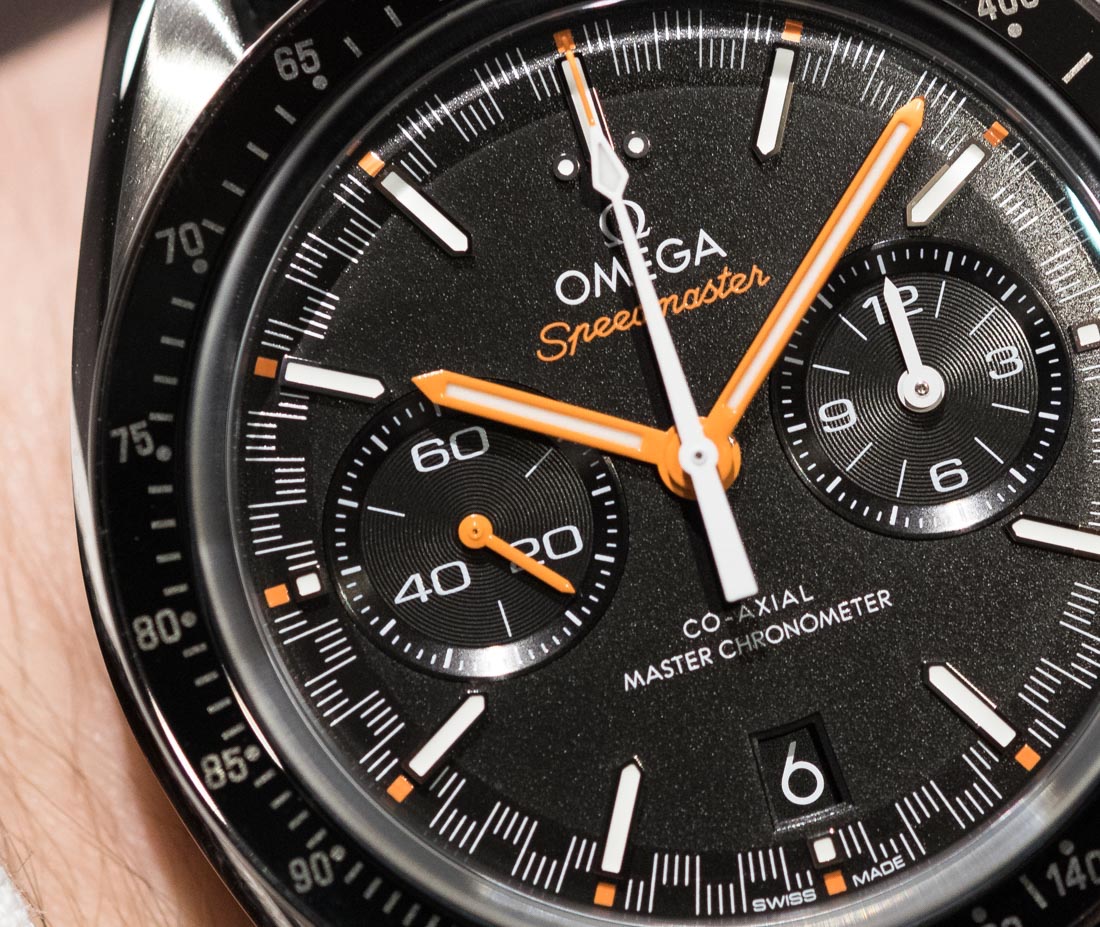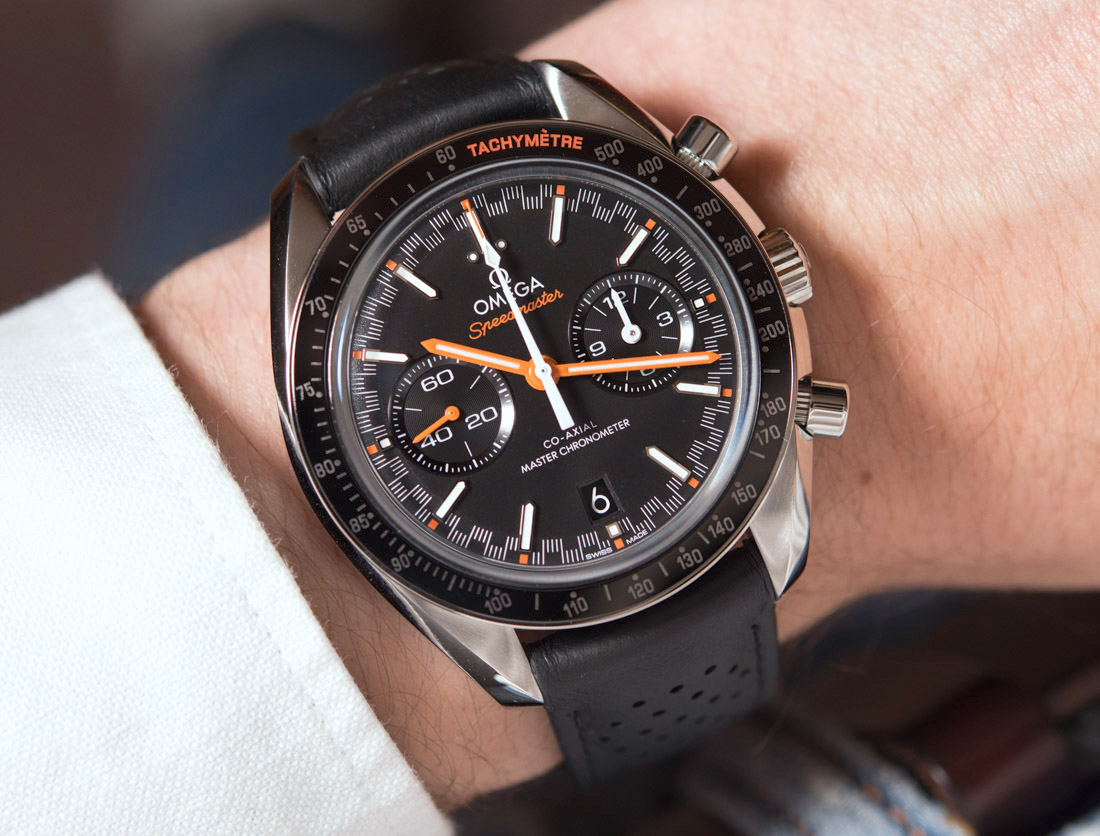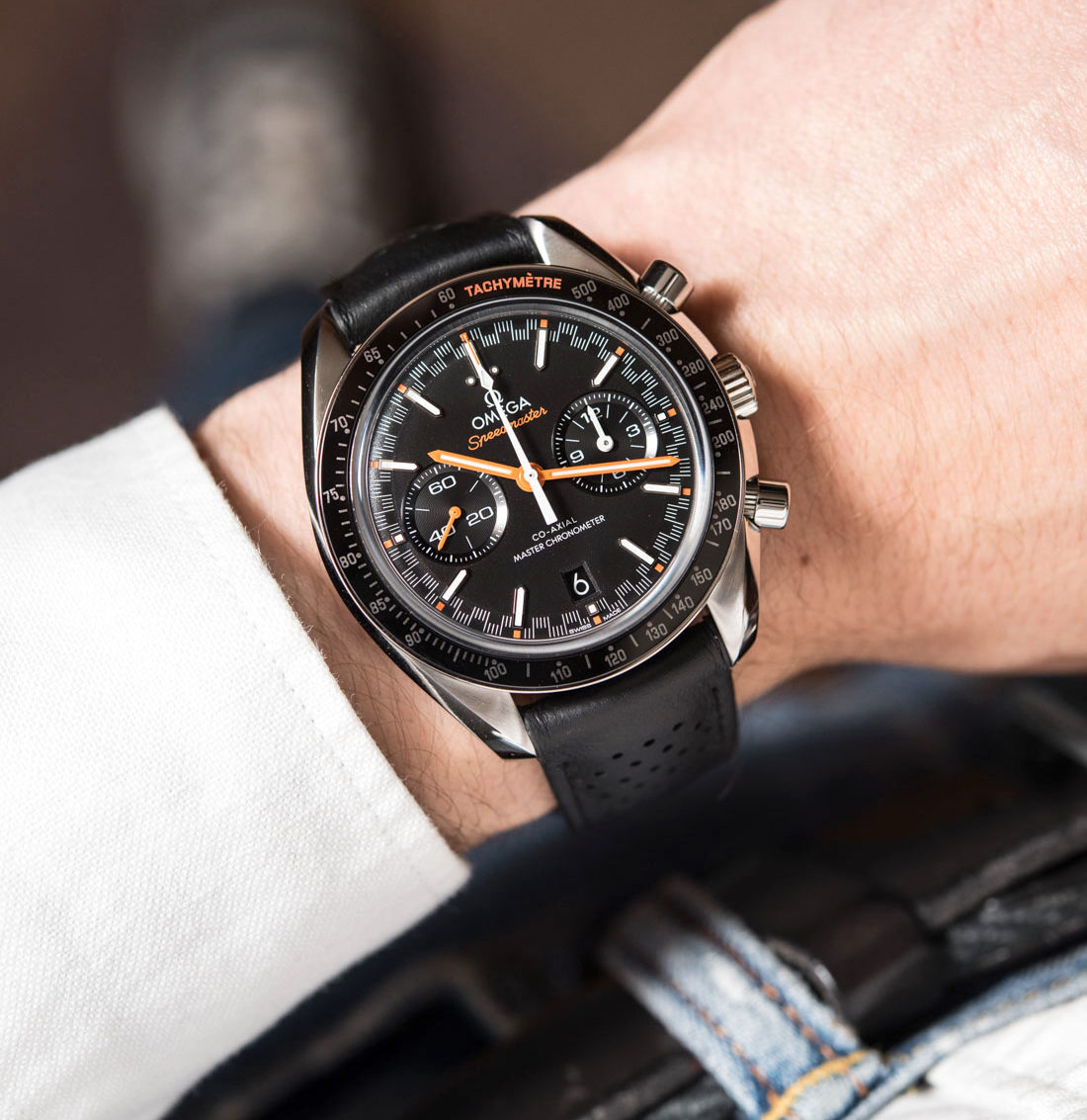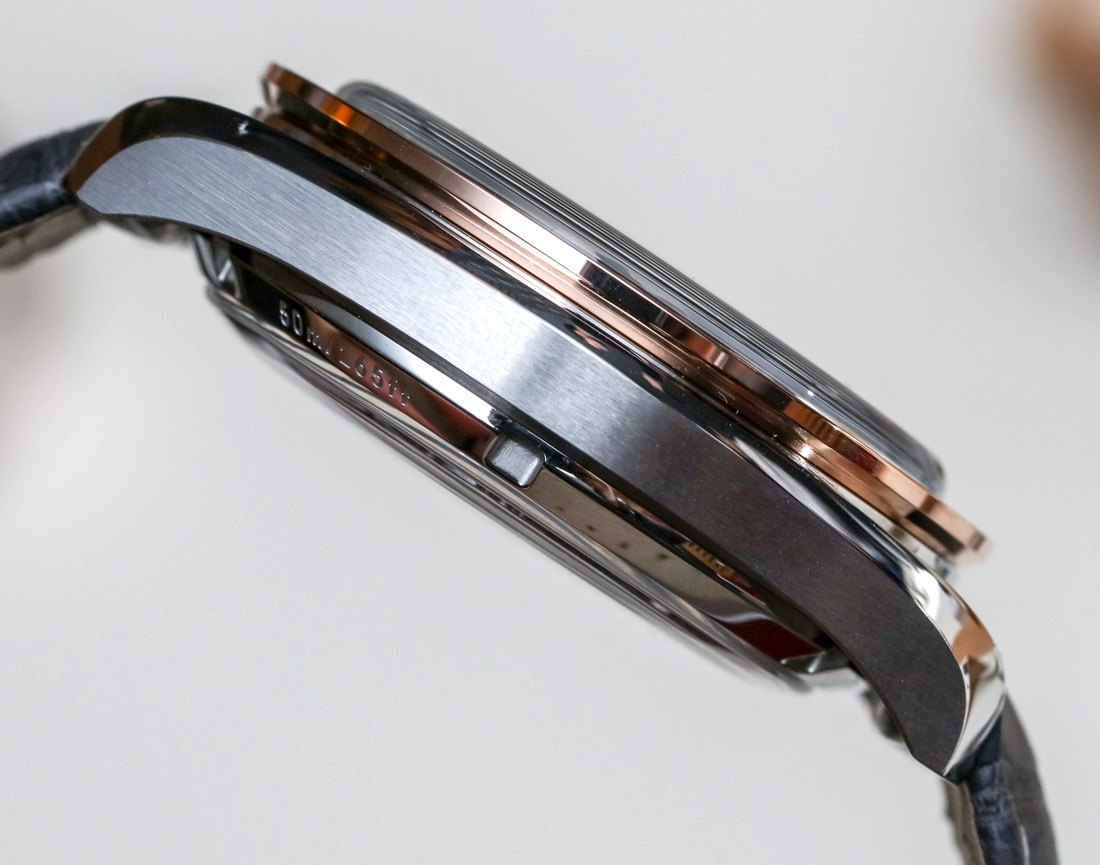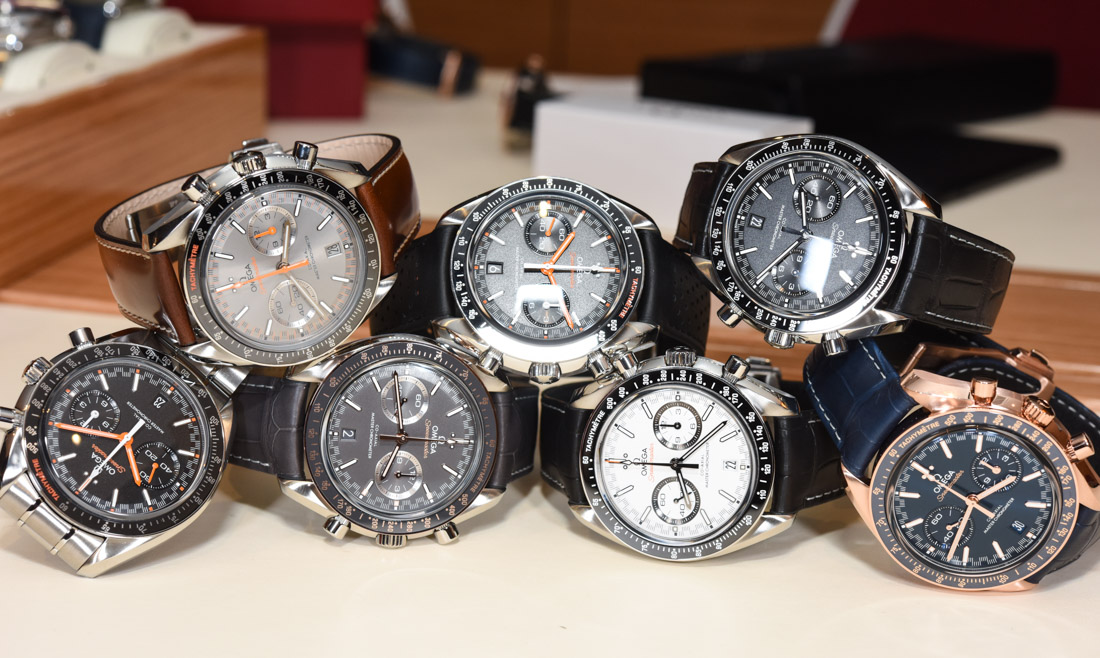
Baselworld 2017 was a rather strong year for Swiss Omega who had over 170 new timepieces to debut. Our meeting with the brand was… overwhelming to say the least. Most important for me was the fact that a good number of their new watches were excellent, offering interesting new variations or improvements on existing classics. 2017 is the 60th anniversary of the Speedmaster which debuted in 1957 and the show predictably saw a number of new models, including the Omega Speedmaster Racing Co-Axial Master Chronometer which this year has 10 different models.
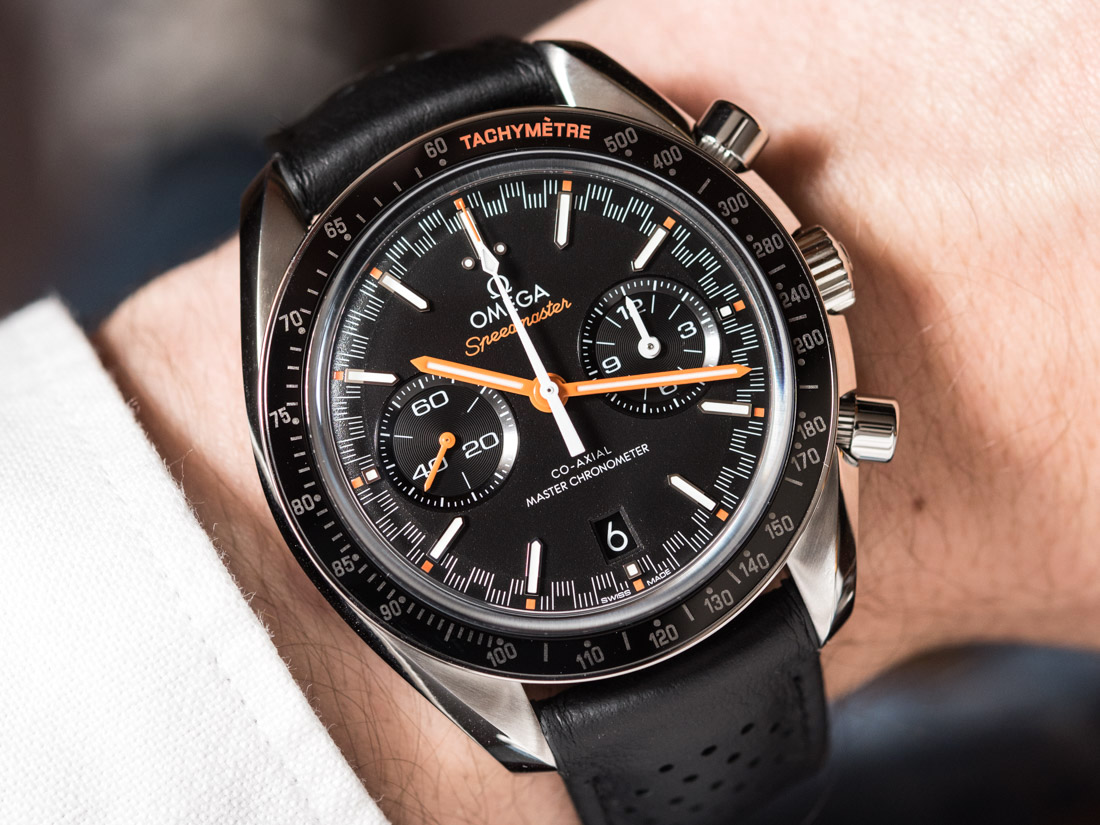
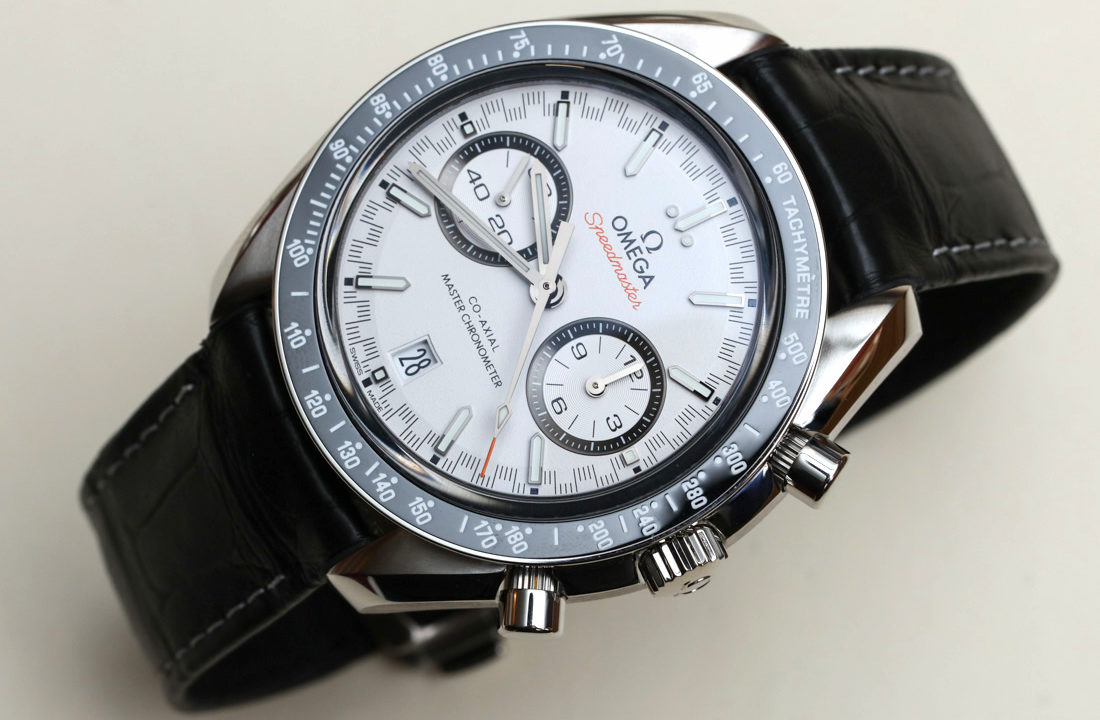
Omega previewed this watch prior to Baselworld 2017, and we covered it with the pre-final name of Omega Speedmaster Moonwatch Automatic Master Chronometer here. While the Speedmaster Racing focused on the motorsports origins of the Speedmaster, it is really a replacement of the now discontinued Omega Speedmaster Co-Axial Chronograph (aBlogtowatch review here). This latter model is really the modern-era Speedmaster in a larger 44.25mm-wide case, and when it debuted more than five years ago was a big deal given that it contained the very impressive in-house-made Omega caliber 9300 automatic movement.
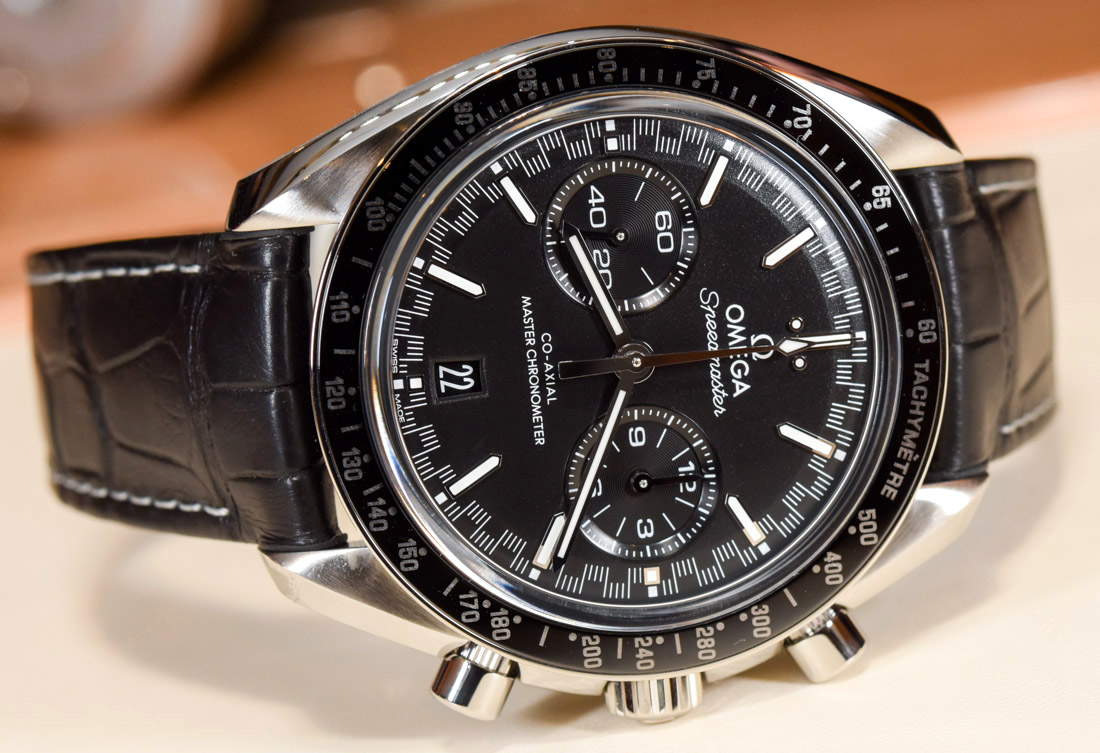
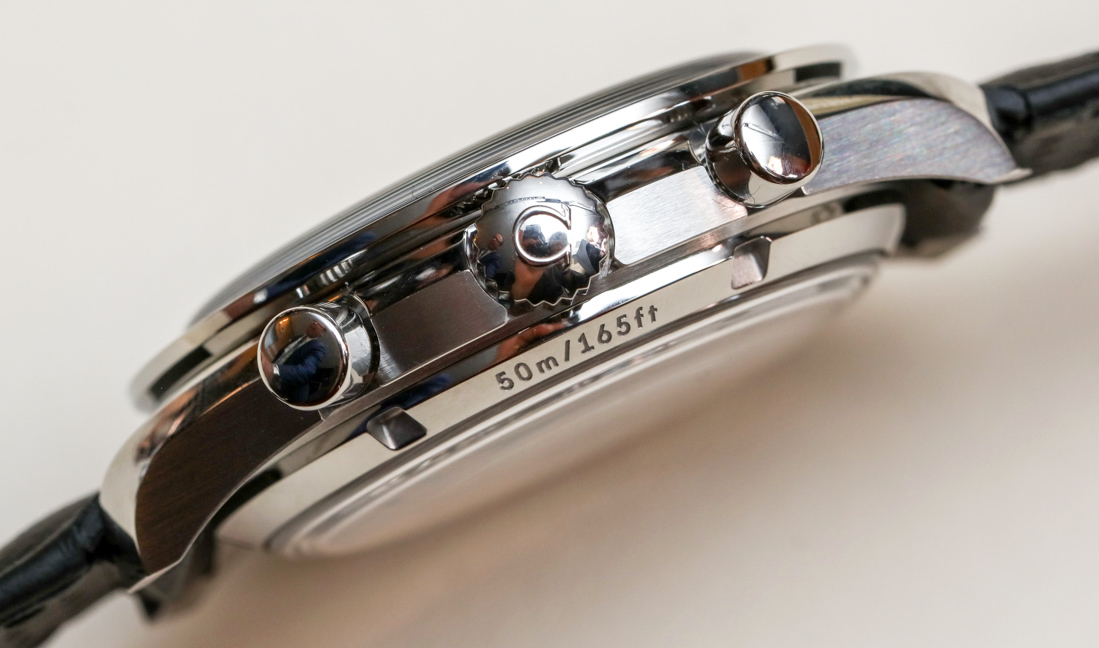
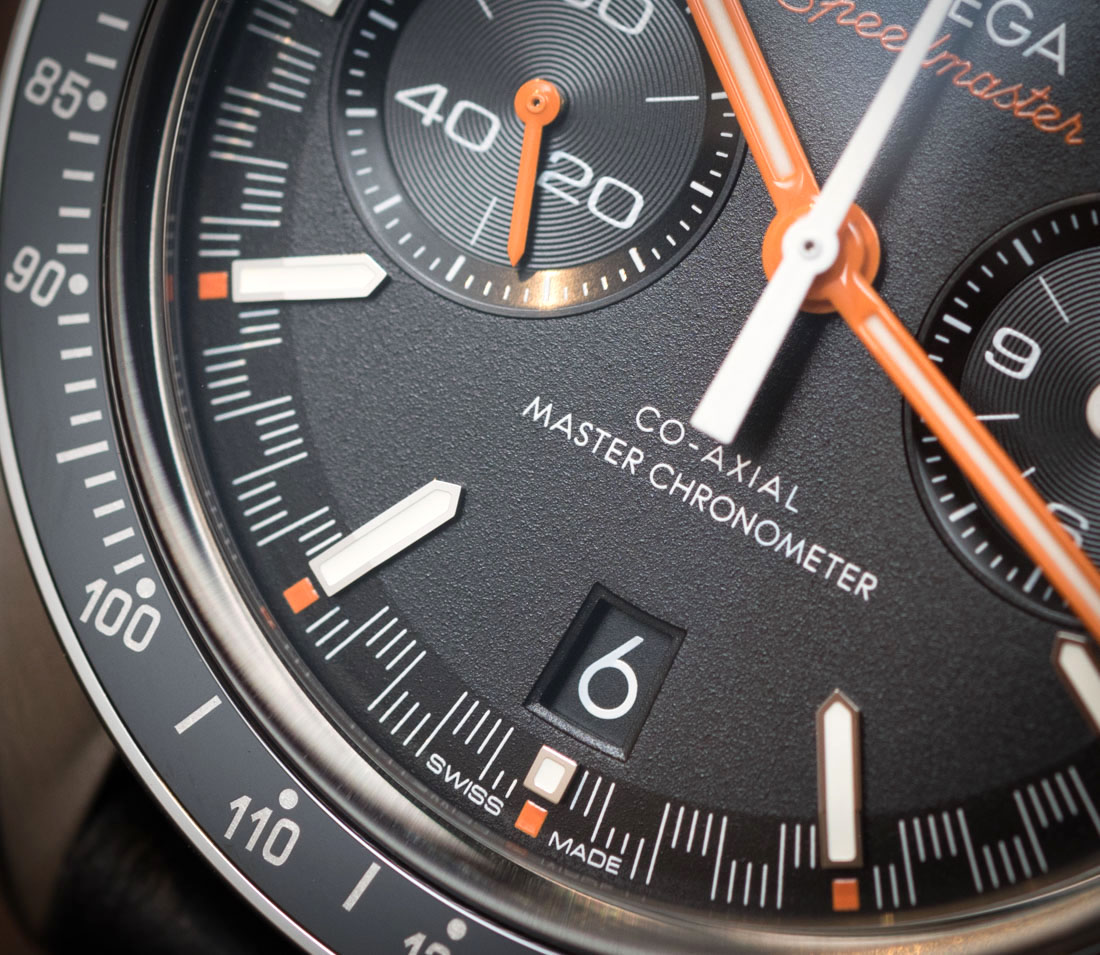
Since the 9300 movement was originally released, Omega has introduced the Co-Axial Master Chronometer standards which, among other things, mean that the movements bearing this name contain both anti-magnetic parts and are METAS certified. Thus, the caliber 9900 (and 9901 with gold) are the modern Co-Axial Master Chronometer versions of the older and now discontinued caliber 9300.
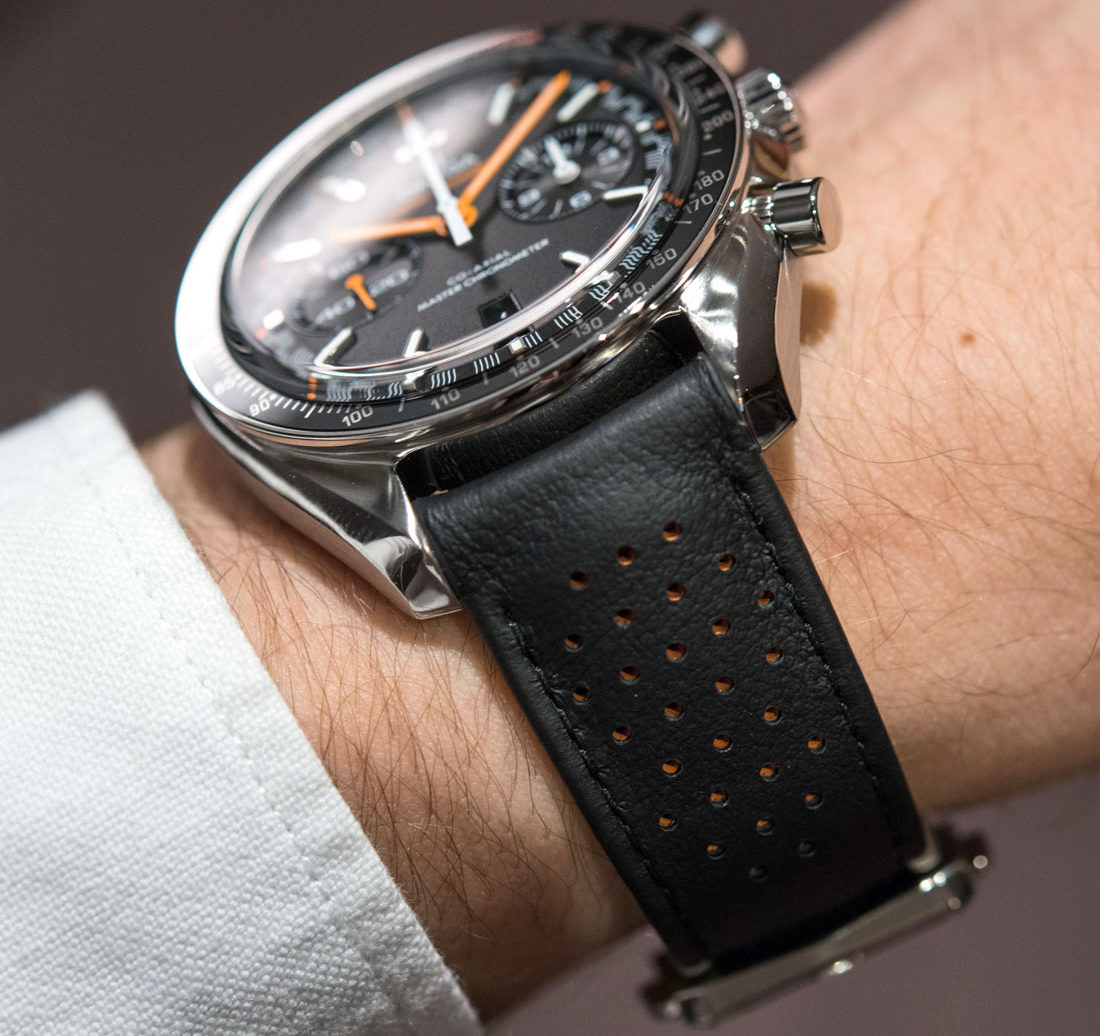
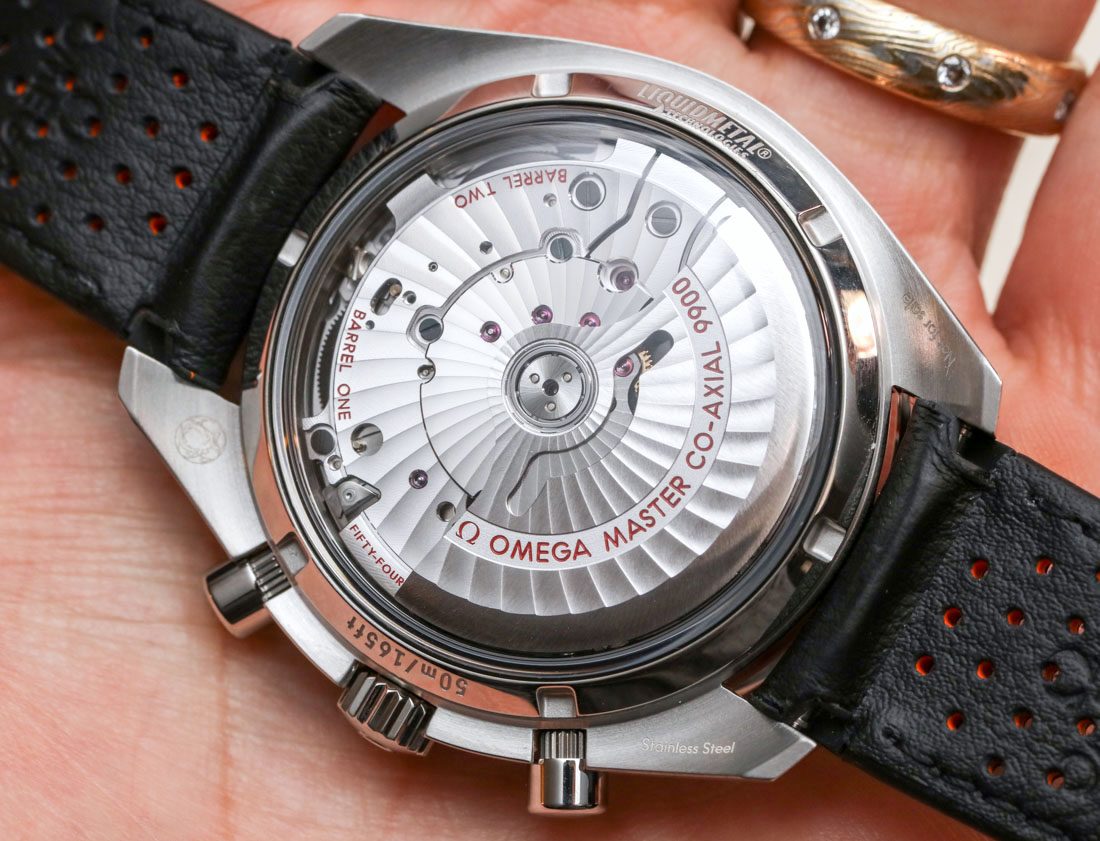
The 9900 family automatic movement is visible through the now more rounded sapphire crystal caseback. It operates at 4Hz (28,800bph), which is more than the 3.5Hz of some previous Co-Axial Escapement Omega movements. The escapement uses a silicon balance spring and has 60 hours of power reserve between two mainspring barrels. The movement has the time with subsidiary seconds dial, and a full 12-hour chronograph with both the chronograph minute and hour counter hands in the same (right) subdial. It has the date at 6 o’clock. The movement is both METAS certified and COSC Chronometer certified, even though the former certification makes the latter one more or less redundant.
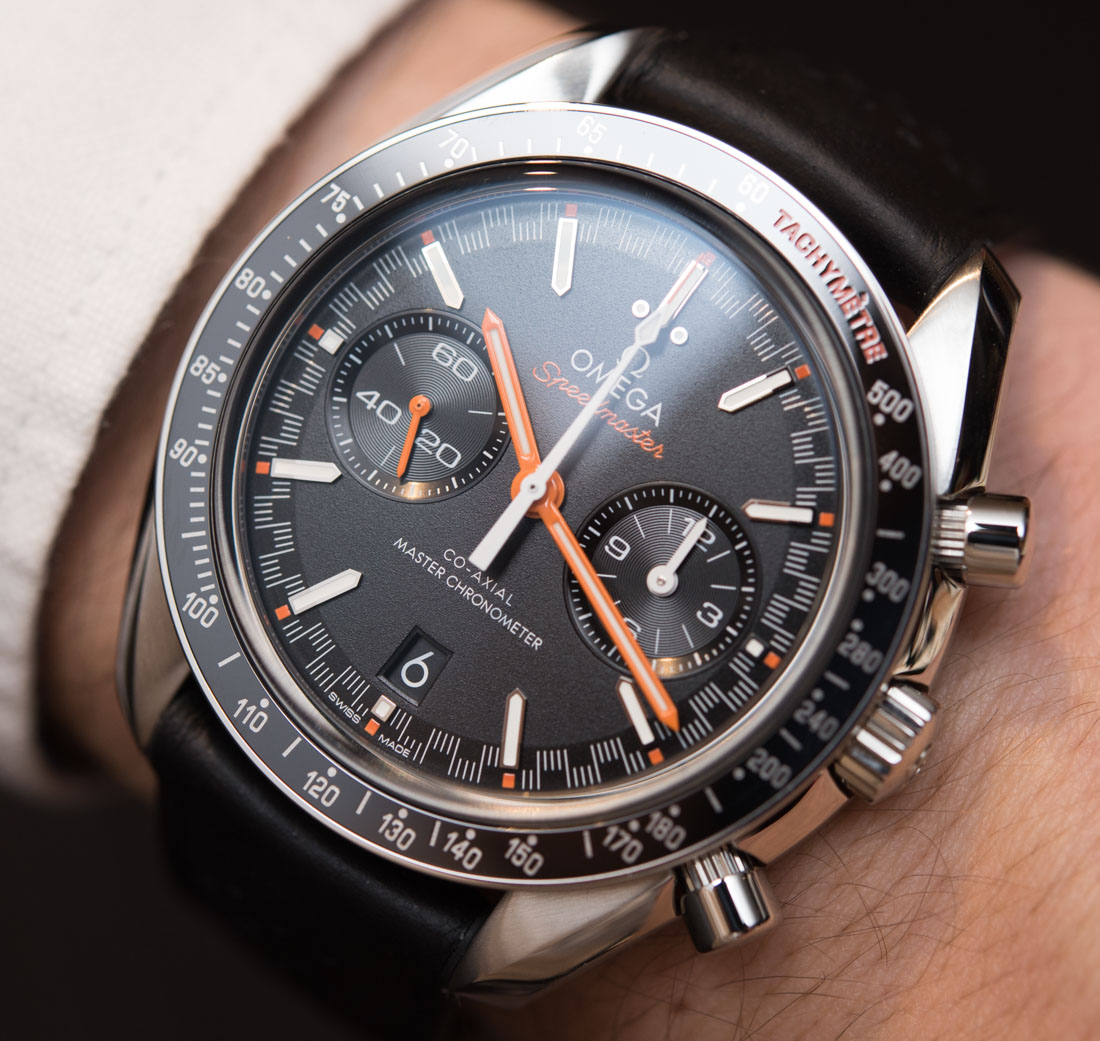
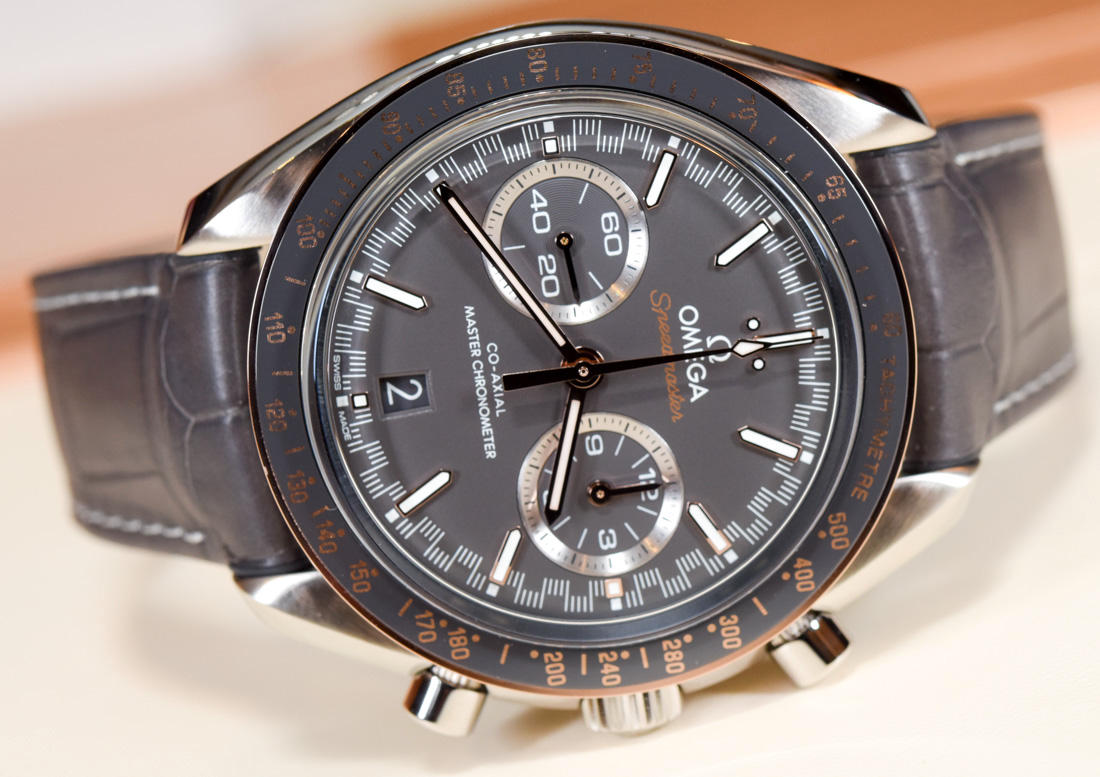
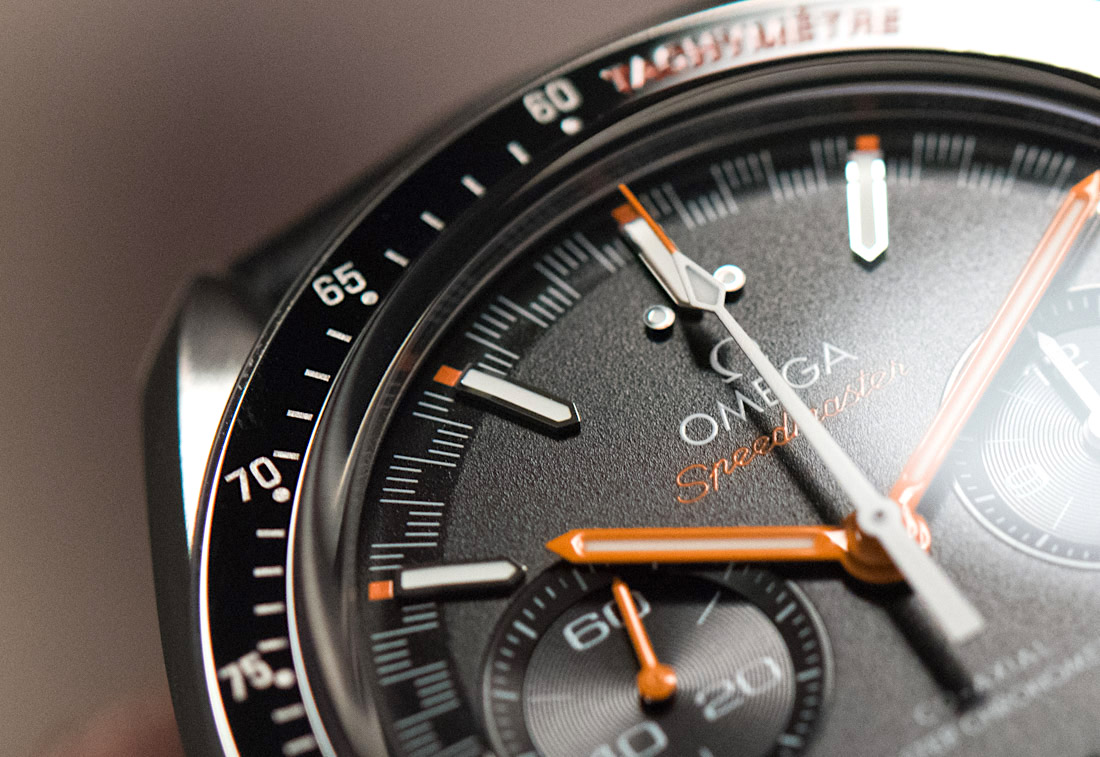
Also discontinued recently is another watch called the Omega Speedmaster Racing (hands-on here) that was introduced in 2011. The 2017 Speedmaster Racing Co-Axial Master Chronometer replaces both it and the Speedmaster Co-Axial Chronograph. The “racing checker” outer scale on the dial periphery and use of bright, orange color on some models is where the “Racing” part of the name comes from. This, again, is an attempt by Omega to focus on the automotive element of the Speedmaster’s history as opposed to the “moonwatch” element of the Speedmaster.
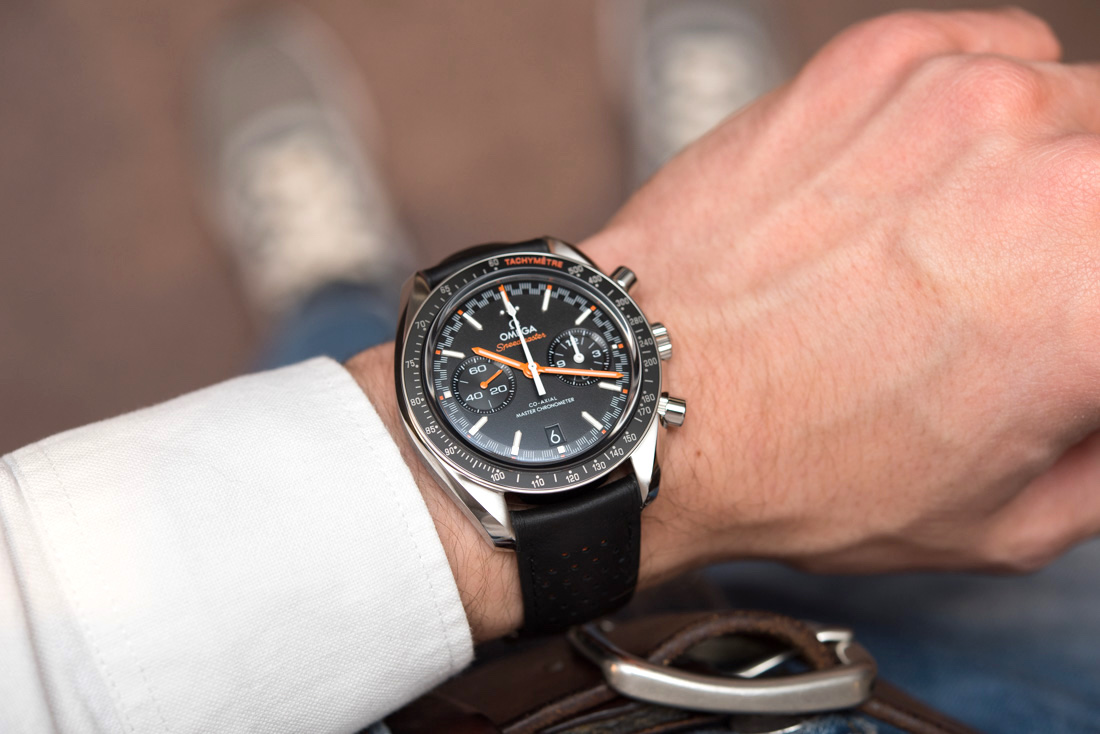
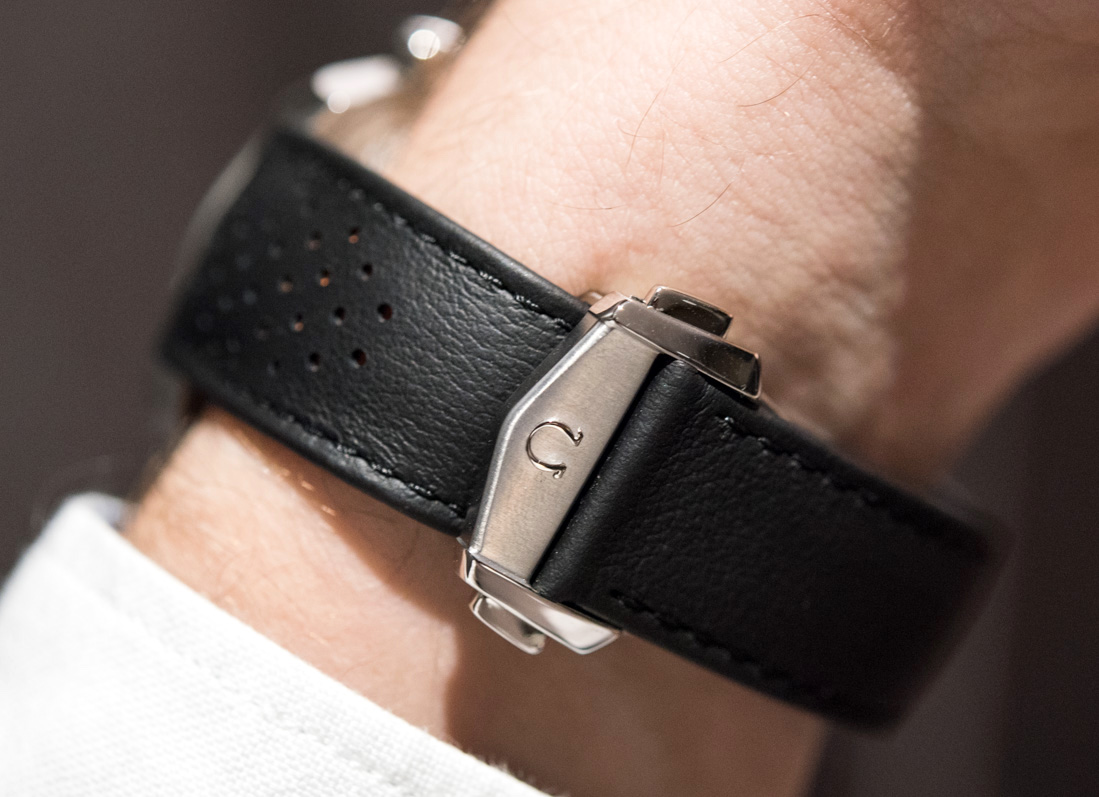
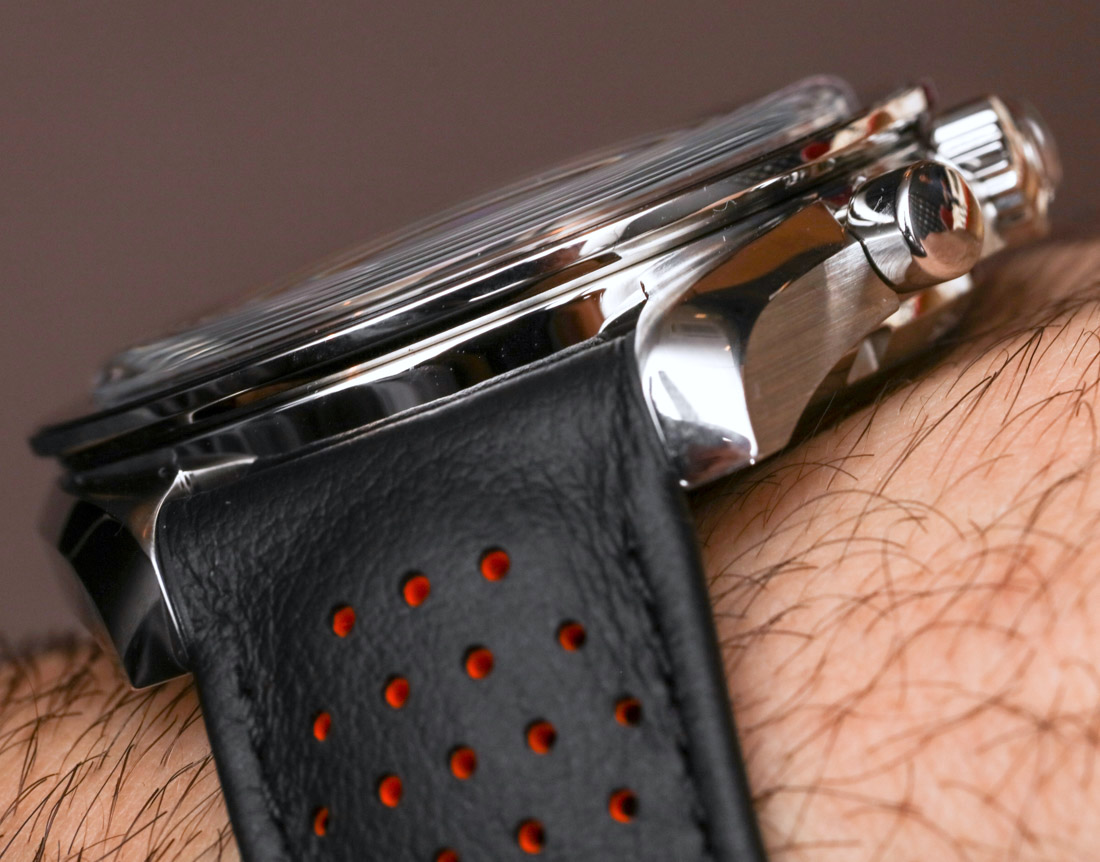
While the case is still the same 44.25mm-wide size of the outgoing Speemaster Co-Axial Chronograph model, it wears a lot more comfortably thanks to a number refinements. For one thing, the case is 0.8mm thinner – due in most part to the more curved versus boxy look of the rear sapphire crystal. You also have new end-links for the bracelet, which point down versus straight out, allowing the watch to fit a lot more comfortably when worn. As I mentioned, the case shape changes are subtle, but the Omega Speedmaster Racing Co-Axial Master Chronometer is much more comfortable to wear than the other 44.25mm-wide Speedmaster models that came before it.
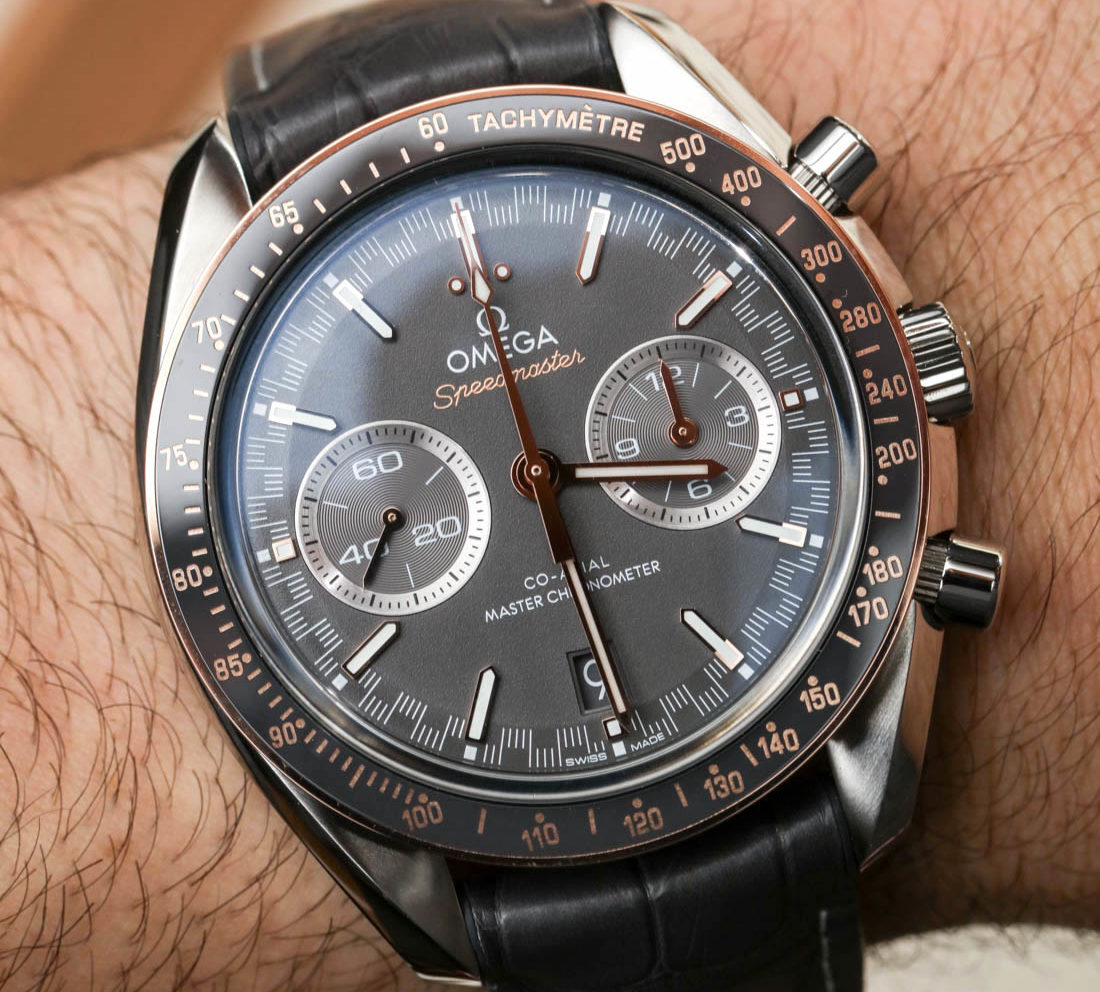
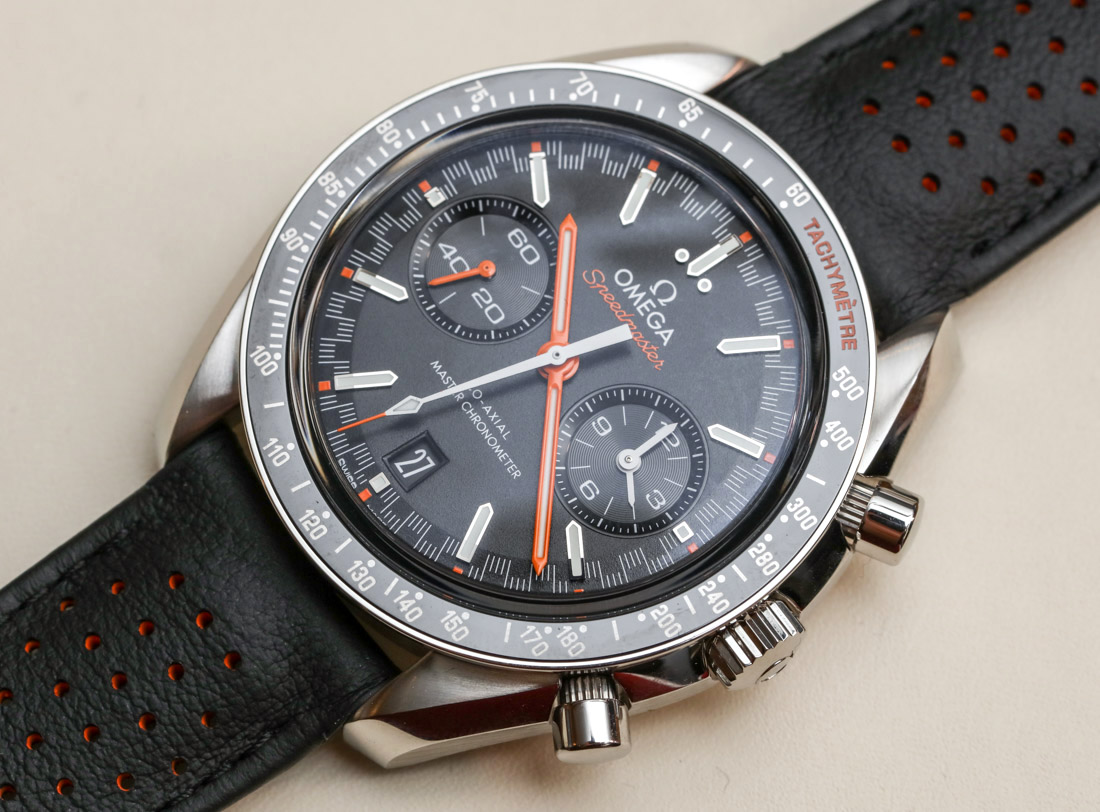
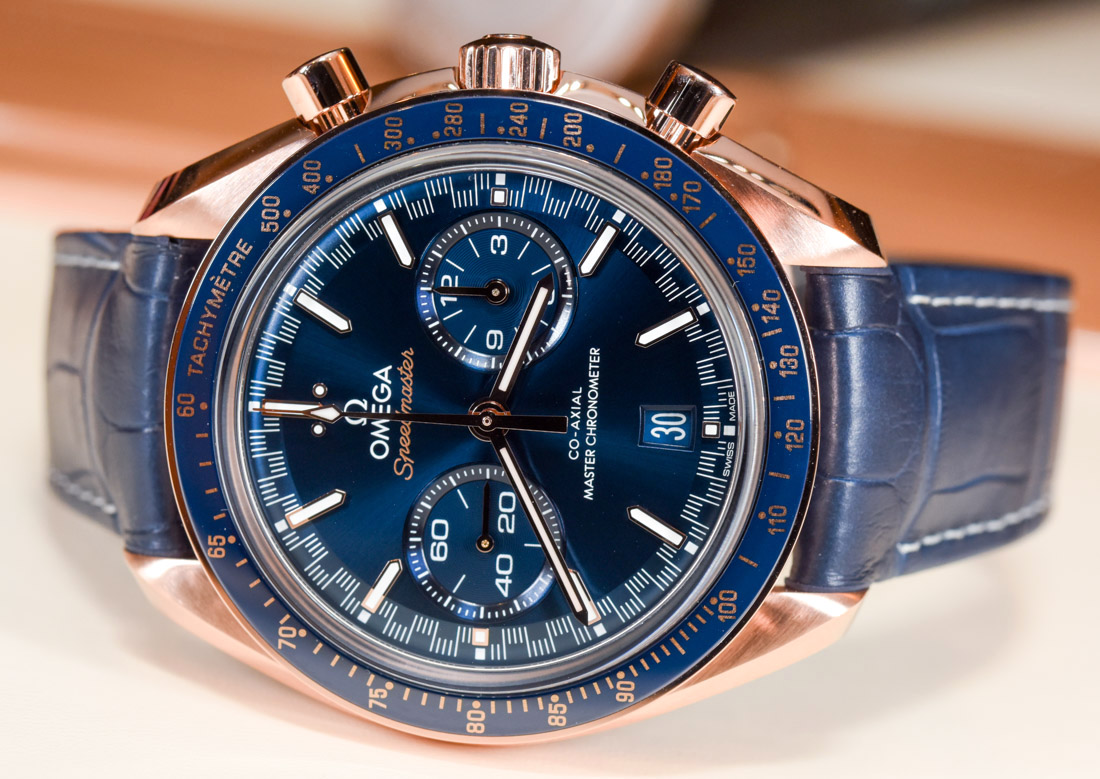
Omega will produce these new Omega Speedmaster Racing Co-Axial Master Chronometer in steel, two-tone steel and 18k Sedna gold, and in all Sedna gold. Moreover, there will be versions on straps or on steel bracelets. Each is pretty handsome, although some versions are going to be a bit more mainstream than others. For example, the white-on-black or black-on-white dial monochromatic versions are likely to be the most popular, but there will certainly be some people keen on the “gray sun-brushed” dial with orange hand accents. A lot of people are going to like the fact that there is now an extremely modern and cool Speedmaster with sporty orange hands.
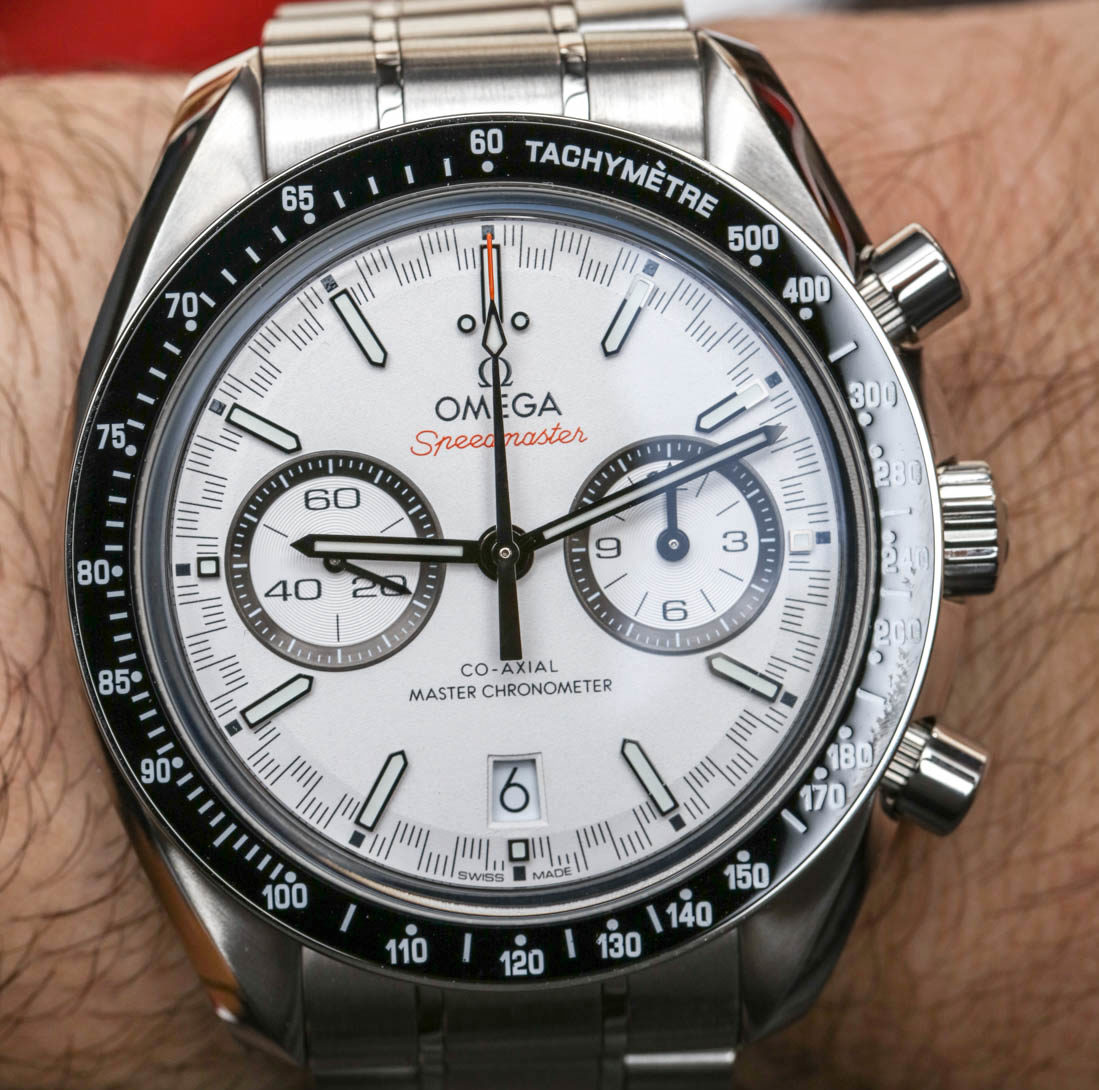
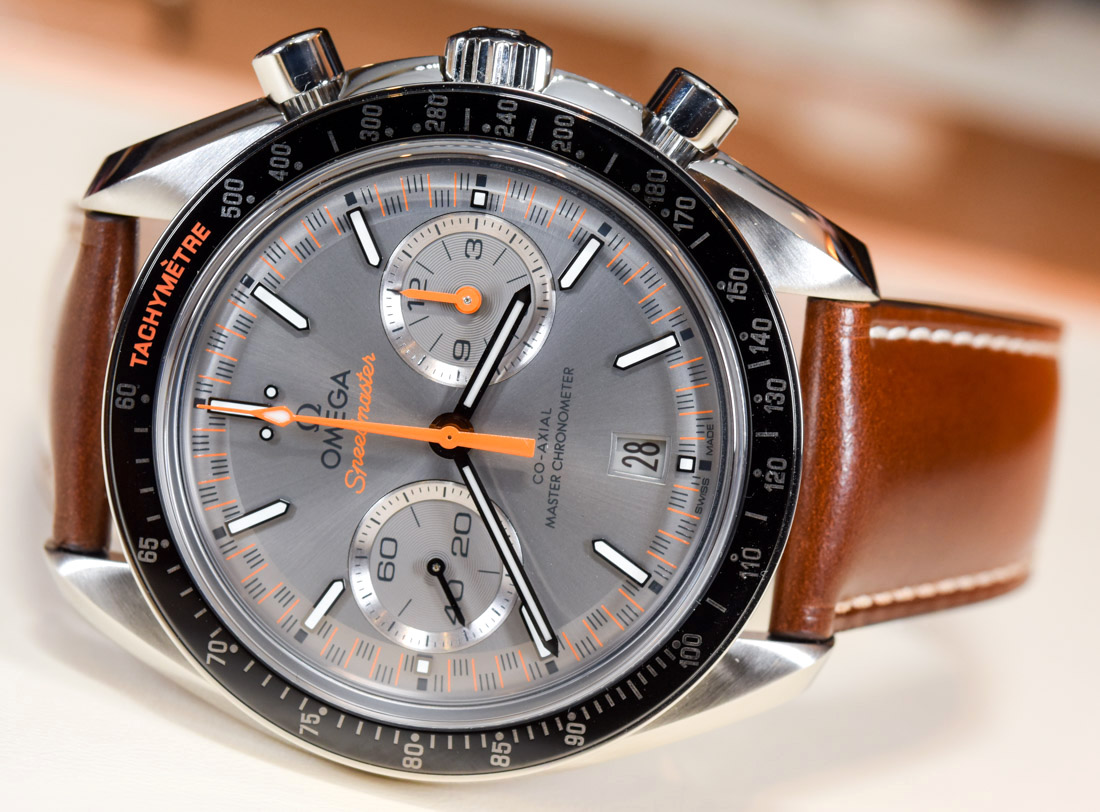
More design refinements can be found on the dial and bezel. The subdials are a bit larger, which is a good thing; the lume-filled, applied hour markers now have slightly tapered ends; the date window is neat-looking and tapered; and the bezels use interesting new production techniques. This is overall the best-looking modern Speedmaster, combining handsome, comfortable looks and stellar technology inside and out.
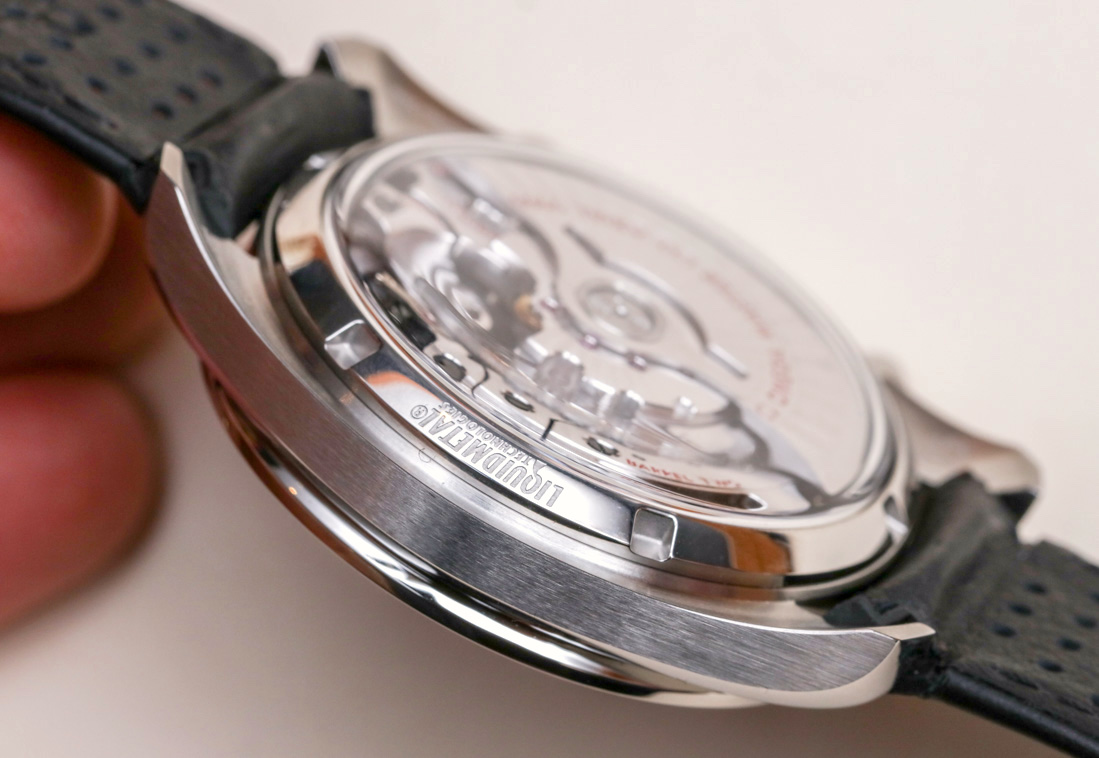
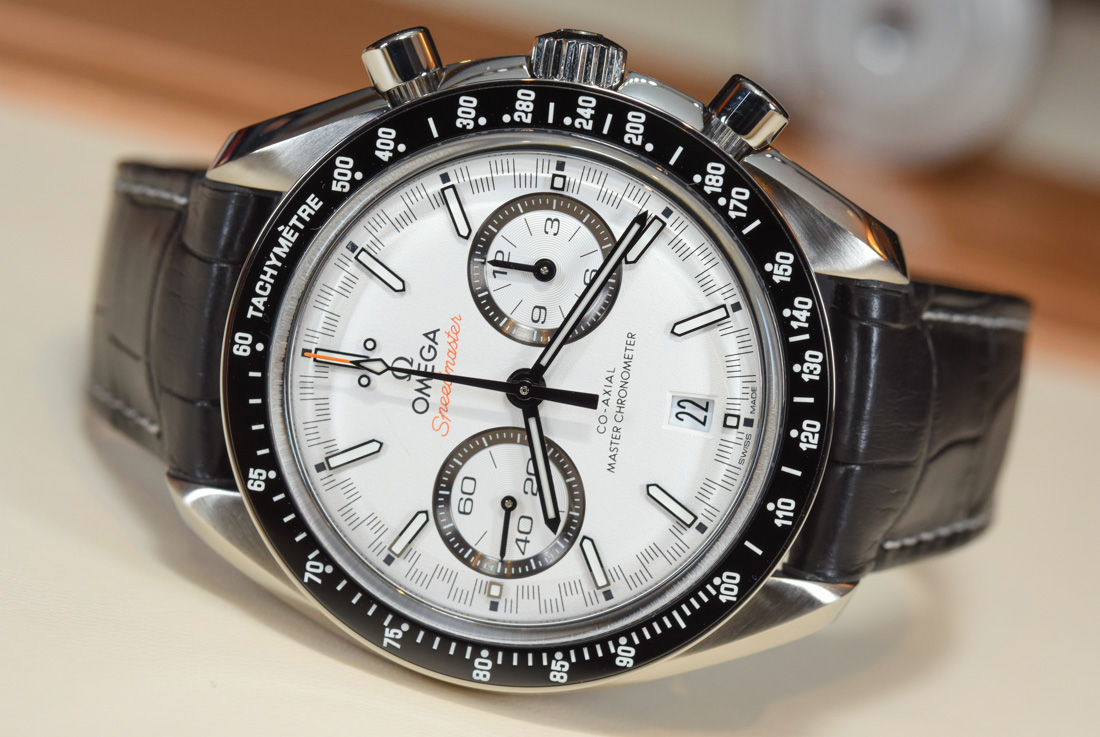
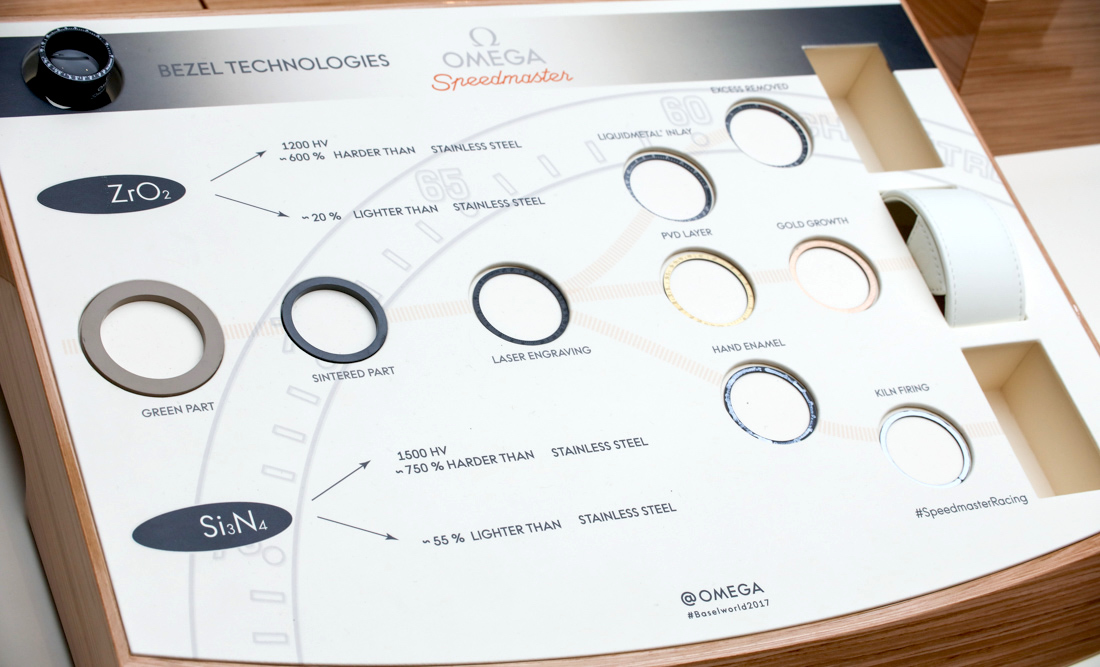
I mentioned that the bezels are new. There are two types of bezel materials, being either ceramic or silicon nitride (depending on the color, as the latter material is used for the gray bezels). Omega then uses either Liquidmetal, Ceragold, or enamel for the tachymeter bezel markers and text. The most interesting one for me is the black ceramic bezels with the white enamel. The latter is used for the bezel text on the white-dialed versions, given the bright, permanent color needed for the white text to match the dial. For me, these are the most interesting dials (white with black-ring subdials), and according to Omega, each of the baked enamel bezels has five layers of enamel.
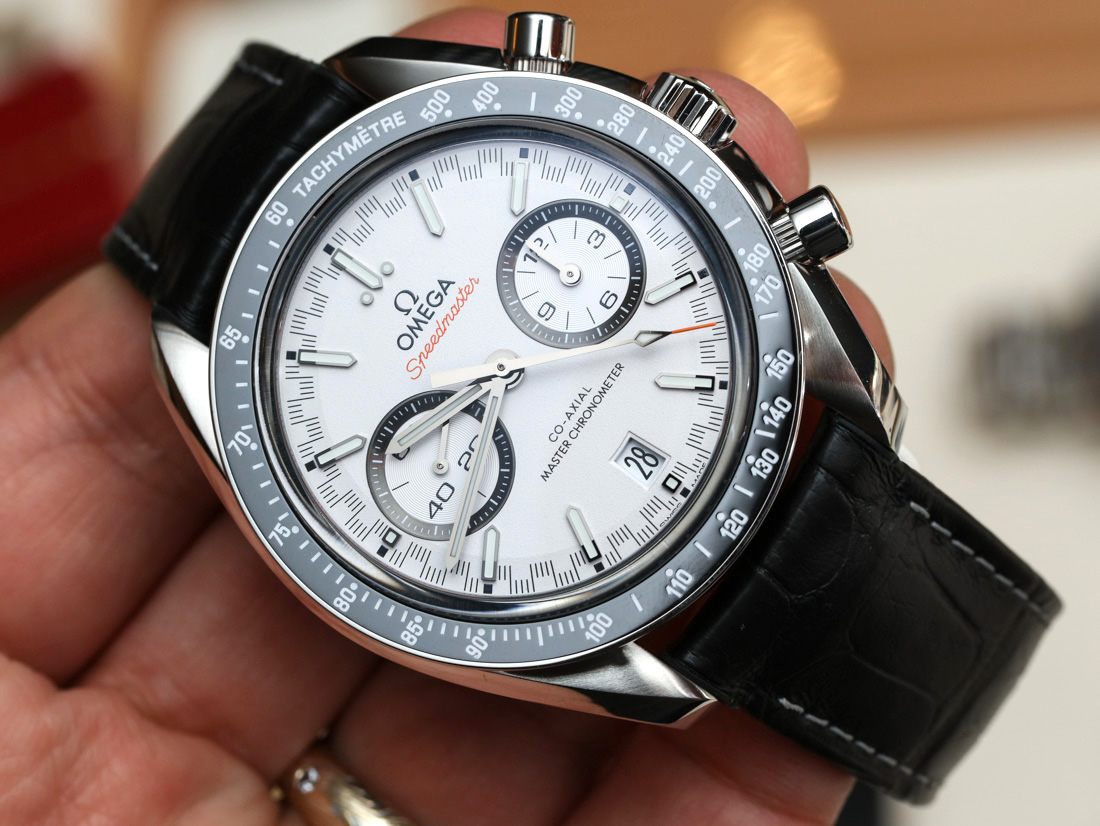
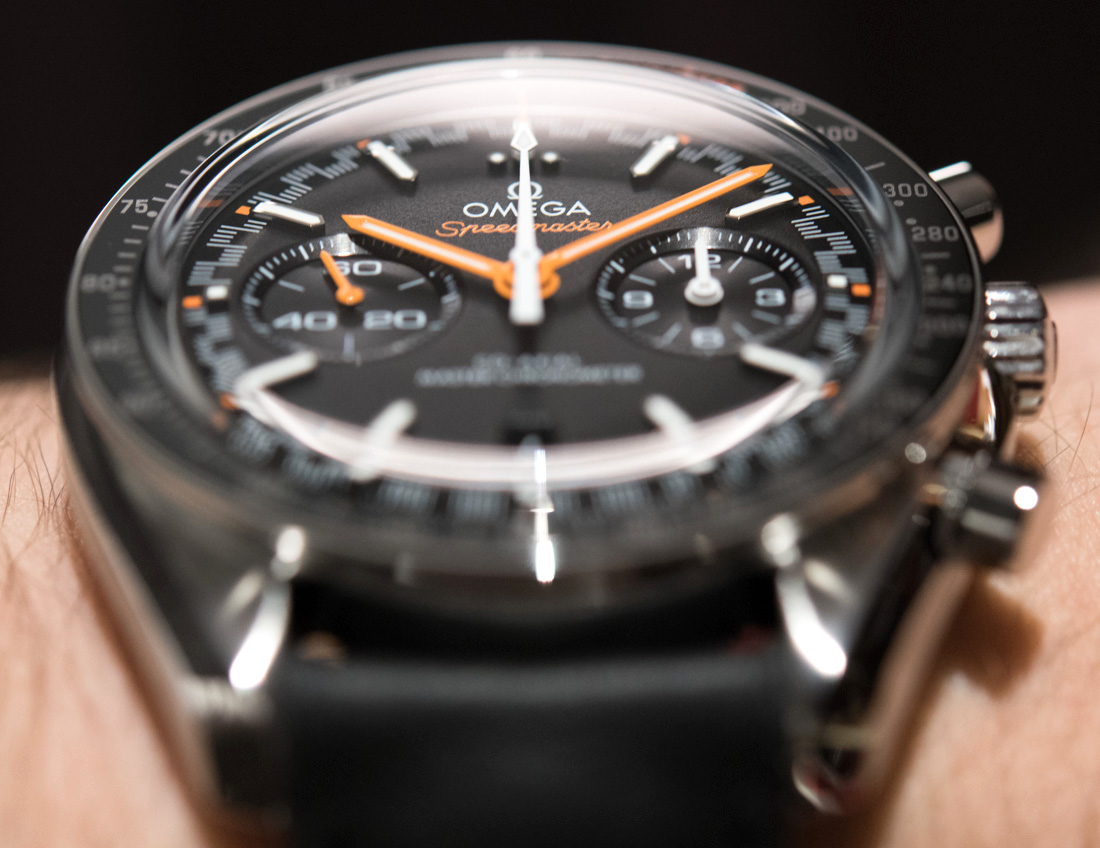
At 44.25mm wide and 14.9mm thick (water-resistant to 50m), the refreshed designs of these “large” Omega Speedmaster Racing Co-Axial Master Chronometer watches allow them to wear as modestly as any contemporary Speedmaster that I can remember. Case polishing and finishing look great, and I can easily say that Omega is really on a roll of consistently refining their best products. Yes, there are some designs that may miss the mark along the way, but for the most part, all of their core products seems to be regularly moving in an appropriate direction these days. The downside, of course, is that with changes each few years and new models coming all the time, selecting an Omega from the options available is a little overwhelming.
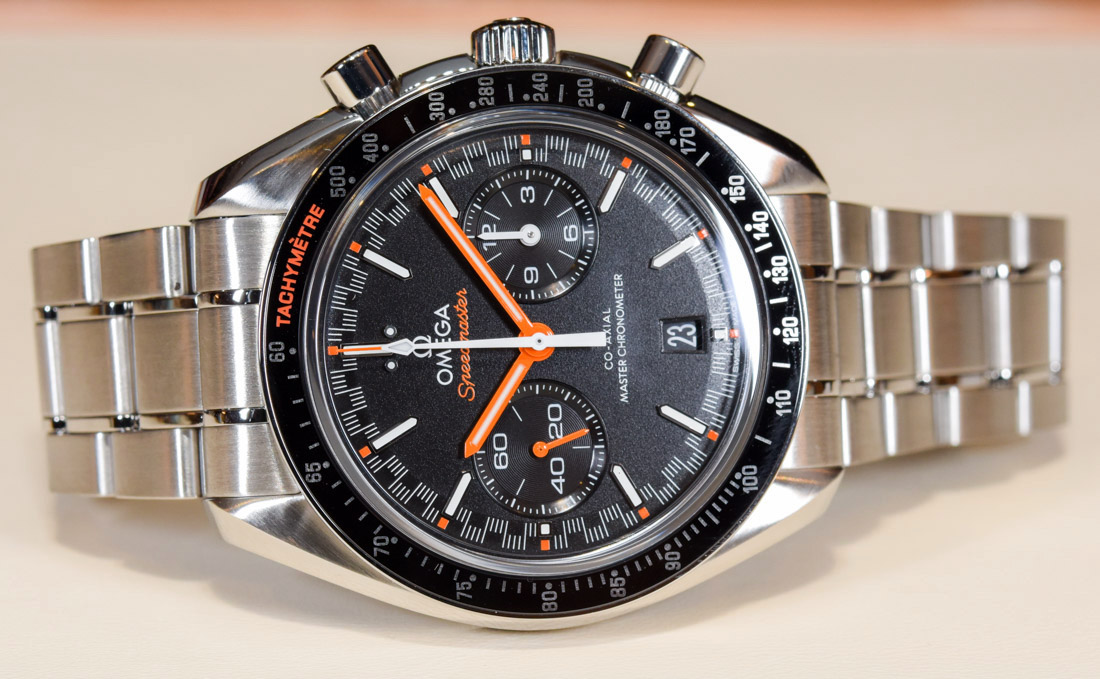
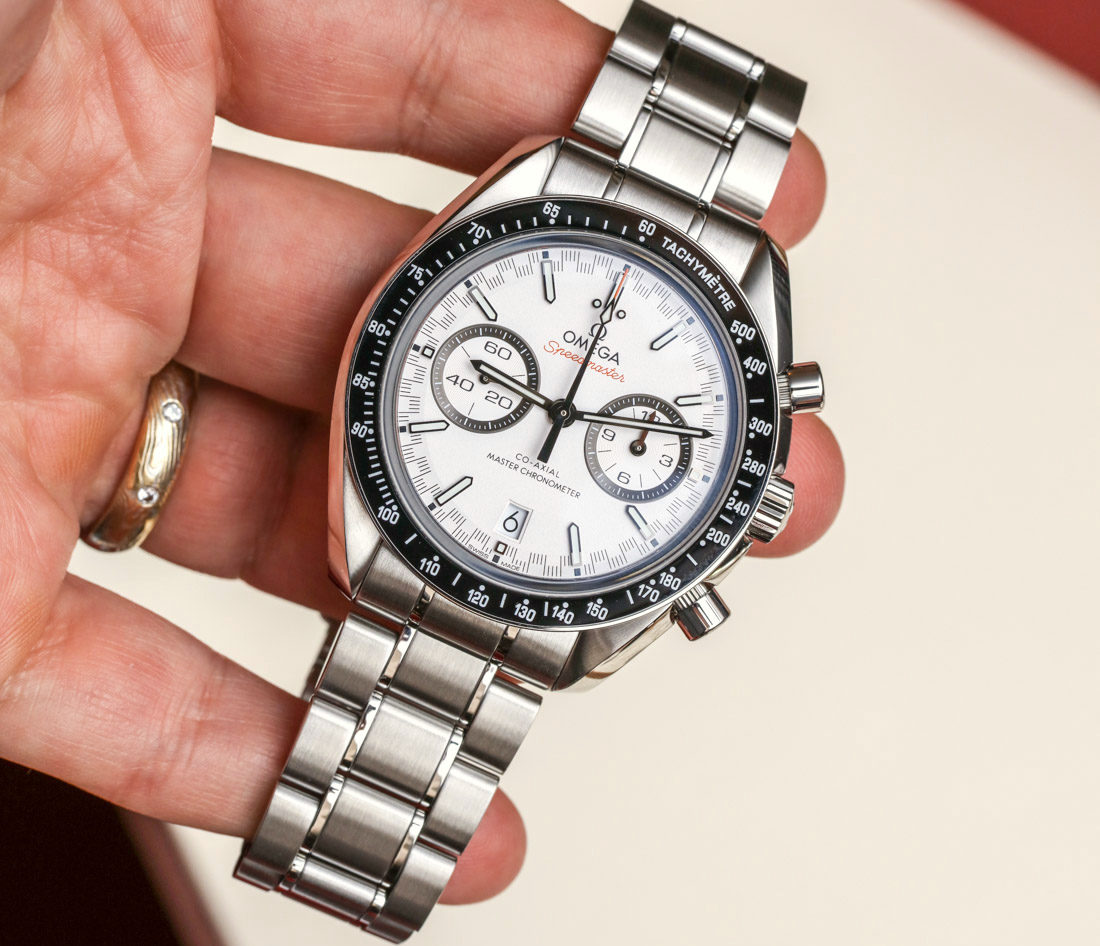
A quick note on pricing as well. Compared to the retail prices of the previous generation Speedmaster Co-Axial Chronograph watches with the 9300 movements, these new Omega Speedmaster Racing Co-Axial Master Chronometer models with the 9900 family movements are priced about 10-15% less, which is about $600 – $800 below the older generation models. This represents a general pricing decrease we are seeing in the industry – which is a good thing. Thus, the Omega Speedmaster Racing Co-Axial Master Chronometer watches aren’t cheap, but the prices seem a lot more fair than I remember.
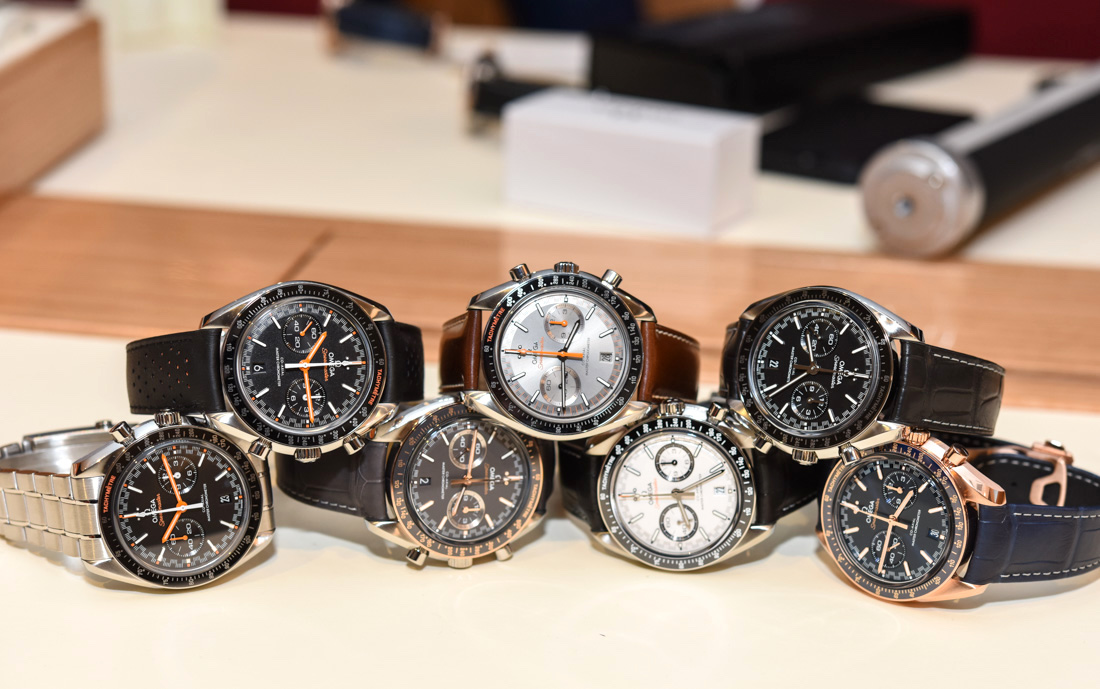
The Omega Speedmaster Racing Co-Axial Master Chronometer models include the reference 329.33.44.51.04.001 at 7,800 Swiss francs (white dial on leather strap), 329.30.44.51.04.001 at 7,900 Swiss francs (white dial on steel bracelet), 329.33.44.51.01.001 at 7,800 Swiss francs (black dial on leather strap), 329.30.44.51.01.001 at 7,900 Swiss francs (black dial on steel bracelet), 329.32.44.51.06.001 at 7,800 Swiss francs (gray dial on brown leather strap), 329.30.44.51.06.001 at 7,900 Swiss francs (gray dial on steel bracelet), 329.32.44.51.01.001 at 7,900 Swiss francs (black dial with orange hands on leather strap), 329.30.44.51.01.002 at 7,900 Swiss francs (black dial with orange hands on steel bracelet), 329.23.44.51.06.001 at 10,300 Swiss francs (gray dial with two-tone steel and 18k Sedna gold on leather strap), and the 329.53.44.51.03.001 at 22,750 Swiss francs (blue dial with full 18k Sedna gold case). omegawatches.com

